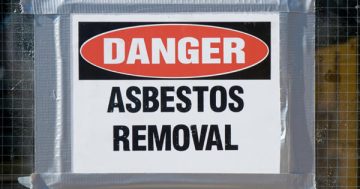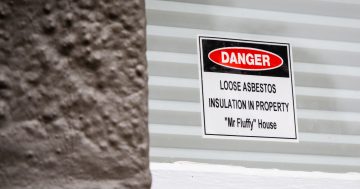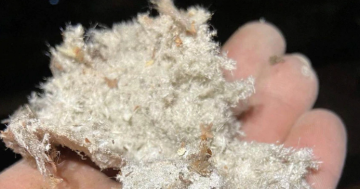Worksafe ACT are warning they’re shutting down a chunk of Dickson with all the asbestos blowing around:
WorkSafe ACT has been made aware of possible exposure to asbestos at several businesses backing onto Woolley Street, Dickson, Work Safety Commissioner, Mr Mark McCabe said today.
“WorkSafe ACT has been advised by a local business that asbestos fibres have been detected in a commercial building in Dickson,” said Mr McCabe.
“Tests conducted in the building have confirmed the presence of asbestos fibres, which we believe has come from the roof, which is constructed of material which includes compressed asbestos.
“Asbestos poses a health risk when asbestos fibres are released into the air and inhaled or ingested. This occurs once a material containing asbestos is broken, starts to deteriorate, or is disturbed in such a way that dust particles containing asbestos are produced. Continued use of this building in its current state could lead to a high risk of exposure to friable asbestos.
WorkSafe ACT has issued Prohibition Notices to several businesses in the building concerned, which is accessed by a laneway running off Woolley Street, Dickson.
“These businesses must cease operating immediately whilst WorkSafe ACT determines the appropriate steps to manage this situation,” continued Mr McCabe. “WorkSafe ACT will also be investigating the circumstances which have led to this exposure to determine whether any parties have failed to meet their work health and safety obligations under ACT legislation.
“WorkSafe ACT is working together with the building owner, tenants and other relevant government agencies to rectify this situation as soon as possible.
“While we believe that the likelihood of exposure for members of the public is low, if members of the public are concerned about possible exposure to asbestos, they should contact their local General Practitioner,” concluded Mr McCabe.


















